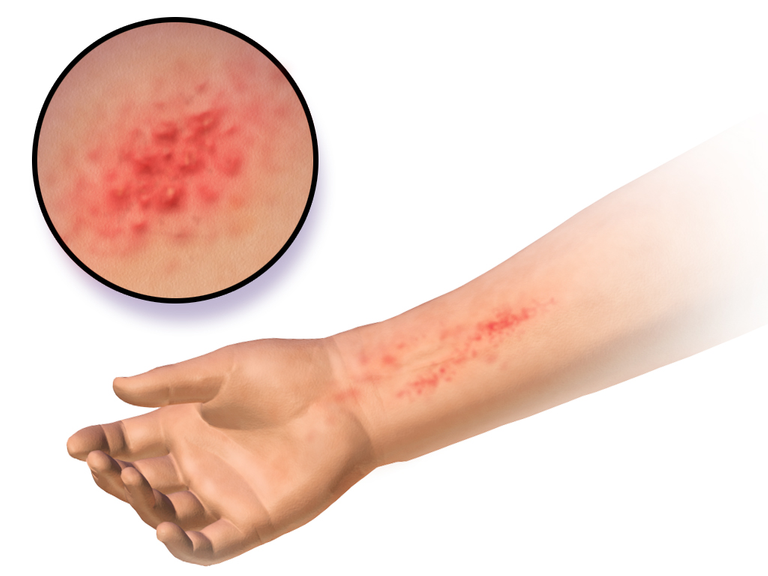Histamine, Allergies and Antihistamines
Have you been at a place only for you to start having irritation and allergies, possibly because of a plant pollen, or a bite, or maybe anything that gives allergy, and then you wonder how your body responds to these alergies when you have them? The nbody begins an inflammation phase which is where histamine comes into action.
Sleep-wake cycles, mood, and appetite are controlled by histamine and it is an autocoid that is produced in the body as it is important in physiological processes in the body as well as the immune system. It is found in almost all parts of the body. It is a local hormone found in the heart, brain, lungs, gastrointestinal tract, liver, and skin. It is a biogenic amine formed from the decarboxylation of histidine which is released mainly by mast cells, sonophils, platelets, and basophils to histamine liberators such as a reaction of antigen-antibody, allergy in food, drugs such as dextrous, hydralazine, venom, trauma, and bile salt. Histamine acts on receptors which are G-protein coupled receptors (GPCRs) known as histamine receptors, they are H1, H2, H3, and H4 receptors where H1 is a Gq receptor, H2 is a Gs receptor, H3, and H4 are Gi receptors. Inflammation is a healing process which includes repair. With inflammation, the blood vessle has to be dilated, and immune cells then go into the region. Histamine is important in Inflammation where it is released from the cell to the affected tissue.
When a foreign body gets into the body, it is phagocytocised by the immune cell which is then antibodies are made against the foreign body which might be allergy. This antibodies attaches to mast cells which after combating the foreign body becomes sensitized to degranulate when next it comes accross the foreign body again to release histamine to the local area where its receptor exists. In explaining each of the receptors and their responses, H1 is involved in inflammation and anaphylactic shock. Blood vessels, skin, nerves, the brain, and smooth muscles have H1 receptors and H1 performs responses by increasing the capillaries through nitric oxide release, thereby dilating the capillaries and blood vessels. Increasing capillary permeability by the calcium concentration of intracellular endothelial-pericyte contraction. It activates the peripheral nociceptors in the pain and pruritus mechanism. H2 is present in the parietal cells in the stomach, and it is involved in the secretion of gastric acid in the stomach and can lead to ulcers. The H3 receptor is an autoreceptor that is involved in negative feedback decreasing histamine levels in the brain, and in the gastric mucosa. H4 has its action on Chemotaxis and Cytokine secretion and is involved in inflammatory responses.
In the past allergies were regarded as toxic substances but over time this has changed. In 1902 french scientists Paul Portier, Charles Richet performed an experiment with purified the toxins which were known to cause reactions in humans and this was where the name Anaphylaxis came into existence. Over time, researchers comfirmed that allergies aren't poisons but some individuals reacted to them. In 1927, histamine was isolated from lungs and heart, and that was when it was realized that histamine was responsible for inflammatory reactions in allergies.
Antihistamine drugs (H1 antagonists) are competitive blockers when there is massive degranulation of mast cells and be replaced by histamine. These drugs can be classified as first-generation and second-generation drugs. The first-generation drugs are antimuscarinic, which act as an anesthetic, anti-hematic, and antiparkinsonian, and function in CNS depression. These drugs are lipid soluble, these drugs can cross the blood-brain barrier and the placenta. These drugs are Diphenhydramine,Prometazine, Chlorphenarmine, and Medizine. The drugs are used for allergies, Nausea, and vomiting with chemotherapy and pregnancy, Motion Sickness, vertigo, pre-operation sedation, as a Sleep aid, and in the acute management of Extrapyramidal Symptoms (EPS). The drug is absorbed via oral intake, it is metabolized in the liver and excreted in the urine. Its side effect would include sedation drowsiness,
Second generation antihistamine drugs cannot cross the blood-brain barrier, they are used for alergies with no antimotion, no anti muscarinic and no sedation effect. They are used for allergies only and these drugs are cetirezine, loratidine, Fexofanidine.
Antihistamines help against allergic reactions by Histamines including anaphylaxis and they target histamine release and its effect against allergies.
https://www.ncbi.nlm.nih.gov/pmc/articles/PMC5419445/
https://go.drugbank.com/categories/DBCAT000665
https://www.ncbi.nlm.nih.gov/books/NBK557790/
https://www.ncbi.nlm.nih.gov/books/NBK538188/


Thanks for your contribution to the STEMsocial community. Feel free to join us on discord to get to know the rest of us!
Please consider delegating to the @stemsocial account (85% of the curation rewards are returned).
Thanks for including @stemsocial as a beneficiary, which gives you stronger support.